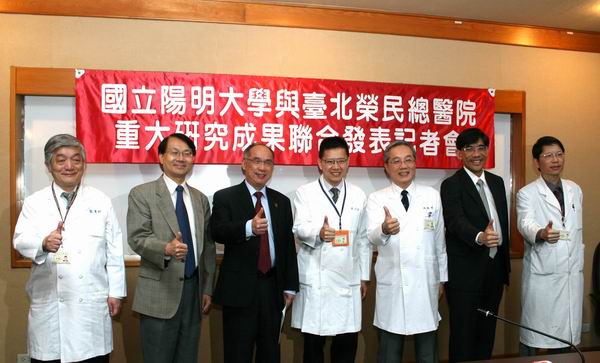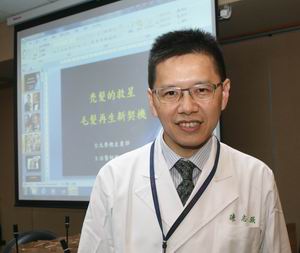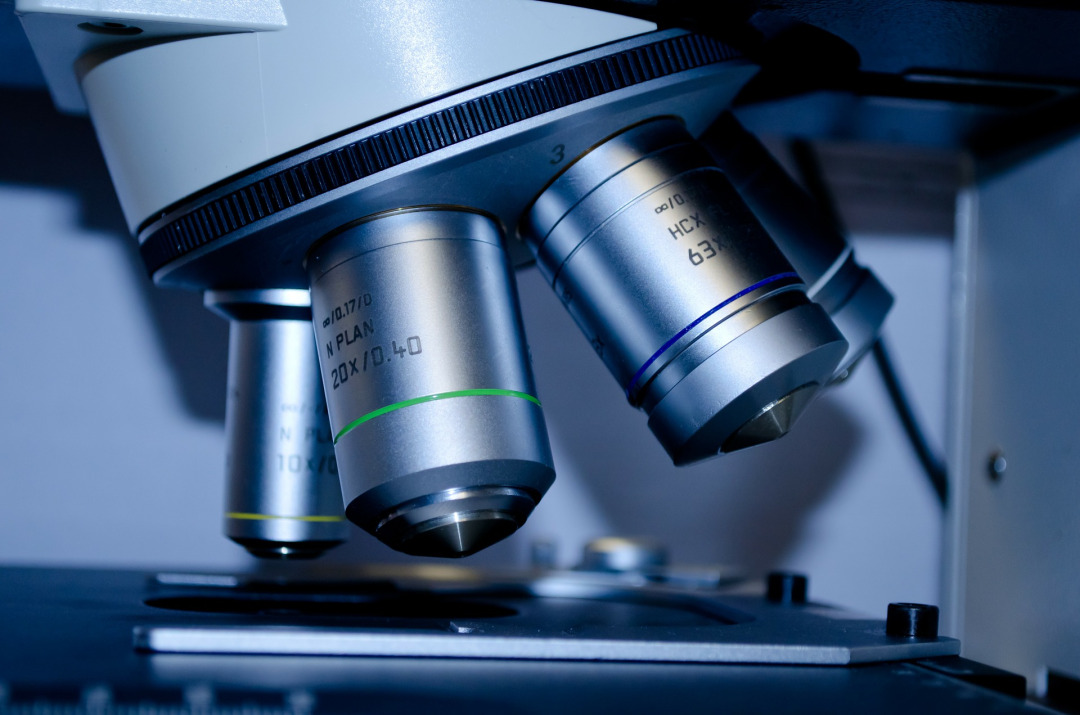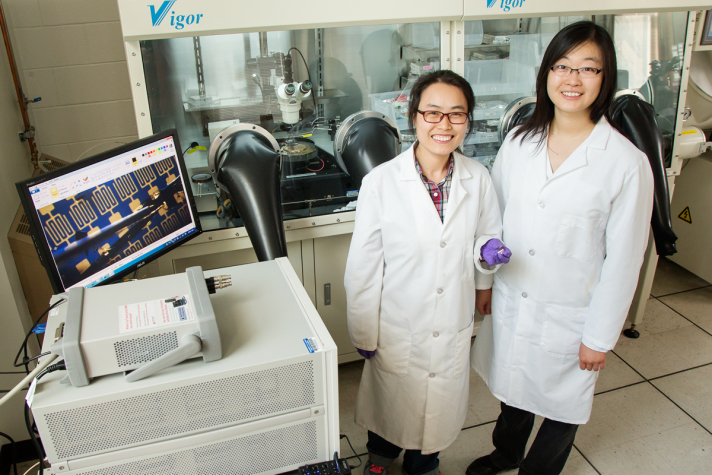
The Taipei Veterans General Hospital-NYMU Research Team’s Regeneration Breakthrough Is Published in “CELL”
- Medicine
- 1.5K
Regeneration medicine proceeds a great breakthrough. Through international collaboration with Dr. Cheng-Ming Chuong, an Academician and professor of University of Southern California, and Dr. Oscar Kuang-Sheng Lee, a professor of National Yang Ming University, Dr. Chih-Chiang Chen, an attending physician at Taipei Veterans General Hospital, recently demonstrated that plucking a few properly arranged hairs can trigger regeneration of up to 5 times more neighboring, unplucked resting hairs. This novel finding was published in “CELL”.

On April 22, 2015, the research team held a press conference at the Taipei Veterans General Hospital and Dr. Chih-Chiang Chen, also an associate professor of National Yang Ming University, reported their findings at the news conference.

Dr. Chih-Chiang Chen reported their findings at the news conference.
Hair plays an important role in human social and sexual communication. Men who have visible hair loss are not only perceived as older and less physically and socially attractive but also reported to be annoyed by the discovery of their condition, and a loss of self-confidence. Because human nowadays face a more stressful life and a polluted environment, more and more people suffer from the problem of hair loss or alopecia. Accordingly, how to stimulate hair regeneration and/or treat the condition of alopecia become not only the focus of attention for the general population but also a research target for scientists.
It is not surprising that injury can induce a regeneration response. Generally, the regeneration process is thought to occur via a one-to-one condition whereby stimulation of one stem cell leads to the activation of that single stem cell. However, this is an inefficient regeneration process. Can the regeneration response be thoroughly elicited by stimulating only some key cells or signals? Recently, the research team accidentally discovered that regeneration could occur through a collective decision-making process. By plucking hairs with a proper arrangement, up to 5 times more neighboring, unplucked resting hairs were activated to regenerate.
However, if the number of plucked hairs was below a threshold, no hairs including the plucked ones regenerated. This type of regeneration is a threshold dependent all-or-none process, which provides an organ-level example of quorum sensing. Quorum sensing is a self-driven decision-making process when certain criteria are met within the responding population.
Each individual element estimates the number of other components with which they interact. Then, a response occurs when a threshold is reached. Quorum sensing has been invoked to describe bacterial cell-to-cell communication, affecting gene regulation in response to population density fluctuations. A synthetic circuit in yeast has been used to achieve versatile social behaviors including quorum sensing. Quorum sensing also has been used successfully to explain the behavior of social insects such as ants and honey bees for their collective decision-making.
This work demonstrates that a quorum sensing cellular circuit can integrate existing cell injury, immune response, and regeneration related molecular pathways from multiple organs to quantify the distress. The stem cell population then decides whether to disregard the stimulus as negligible or respond to it with a full-scale cooperative regenerative response when a threshold is reached.
This finding is important in the field of regeneration medicine. The research team believes that the quorum sensing behavior principle is likely to be present in the regeneration of tissue and organs beyond the skin. Utilizing such efficient regenerative strategies opens a new window in treating alopecia as well as other degenerative disorders.
Source: NYMU


